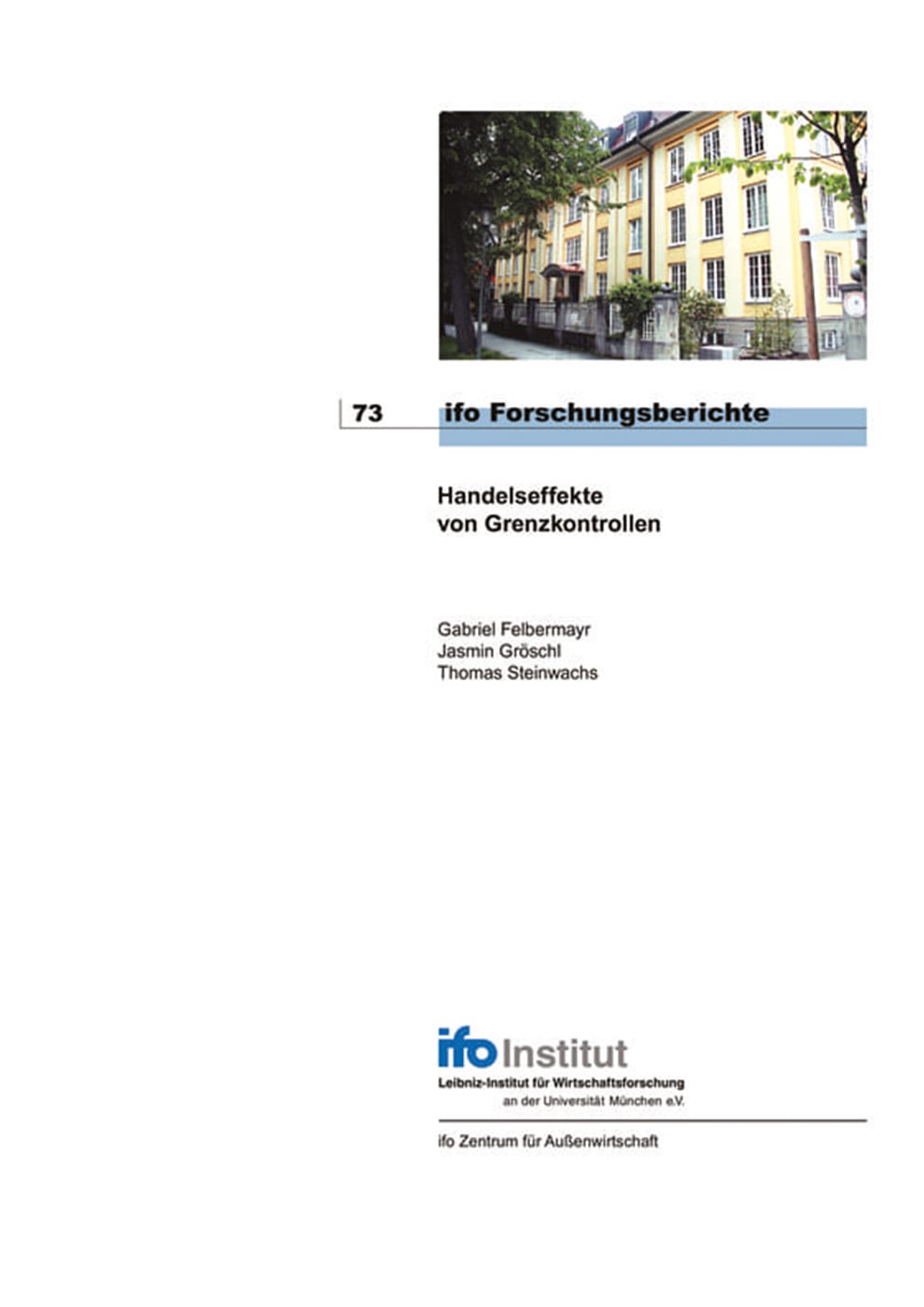The trade effects of border controls
ifo Institut, München, 2016
ifo Forschungsberichte / 73

The Schengen Agreement that came into force on 26 March 1995 created freedom of movement within the European domestic area and thus achieved an unprecedented goal of continental integration. The threat of global terrorism as well as a sharp rise in refugee figures in Europe since summer 2015, have recently given rise to a fundamental debate in the Schengen area over the extent to which keeping internal borders open is politically and economically tenable. This study addresses three issues: How heavily is the travel time between cities affected by border controls? Does the elimination of border controls by the Schengen Agreement influence cross-border trade in goods and services? What welfare effects are expected to arise from a change in international trade volumes following a reintroduction of border controls in the Schengen Area? The study finds that crossing country borders withing the Schengen area is around 20 minutes quicker than crossing borders between two countries in cases where at least one country doesn't belong to the Schengen area. A reintroduction of border controls in the Schengen area would reduce bilateral goods exports by 2.7% per border crossing, equivalent to a tariff of 0.54%. Bilateral services exports would be reduced by 4.2%, equaling a tariff of 0.82%. A complete reintroduction of border controls in the Schengen area would lead to a fall in real German GDP of 4 to 11 billion euros per year compared to the status quo. The reintroduction of border controls at all Schengen borders along the refugee route leads to effects on German GDP of 1.36 to 3.36 billion euros per year. Similar analyses have been conducted for Bavaria, Austria, and the European Union.